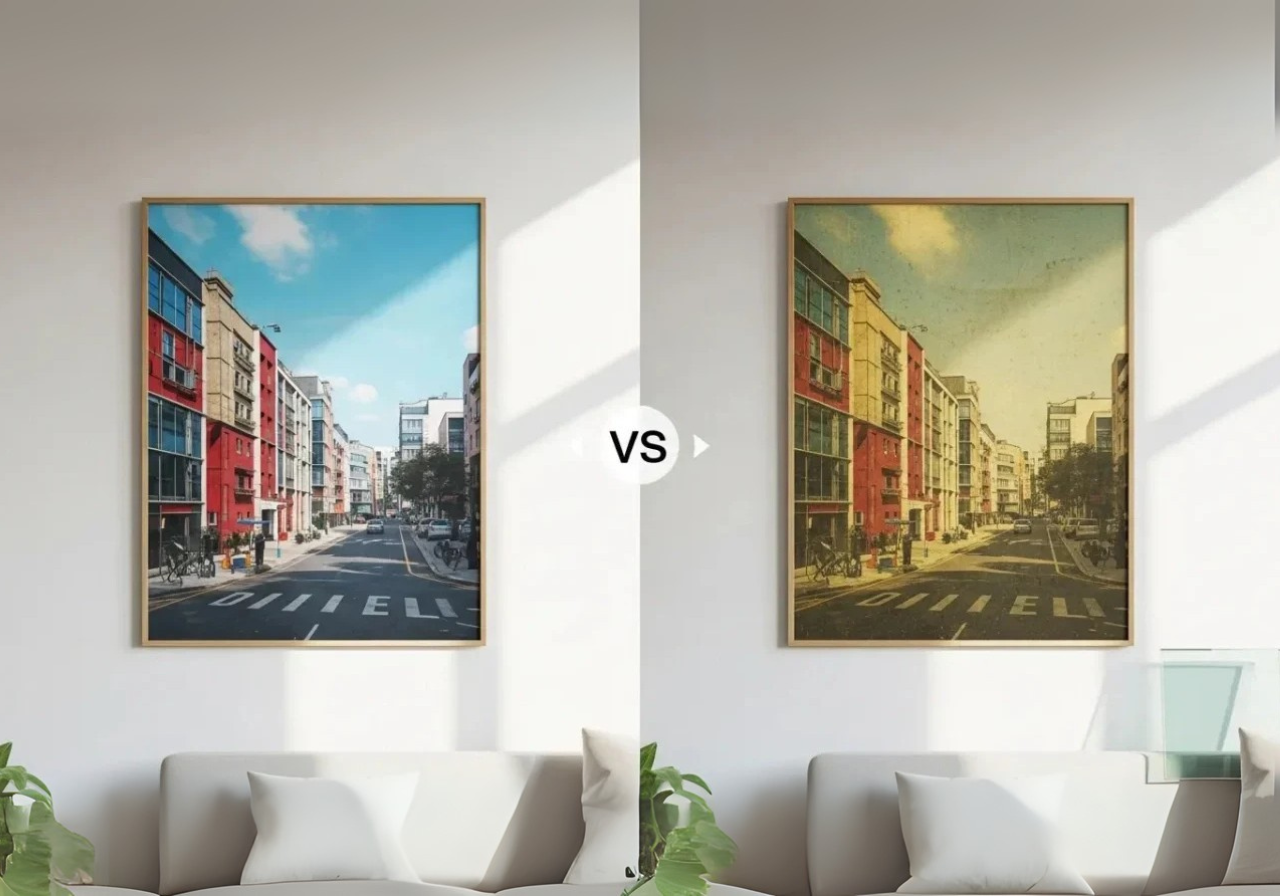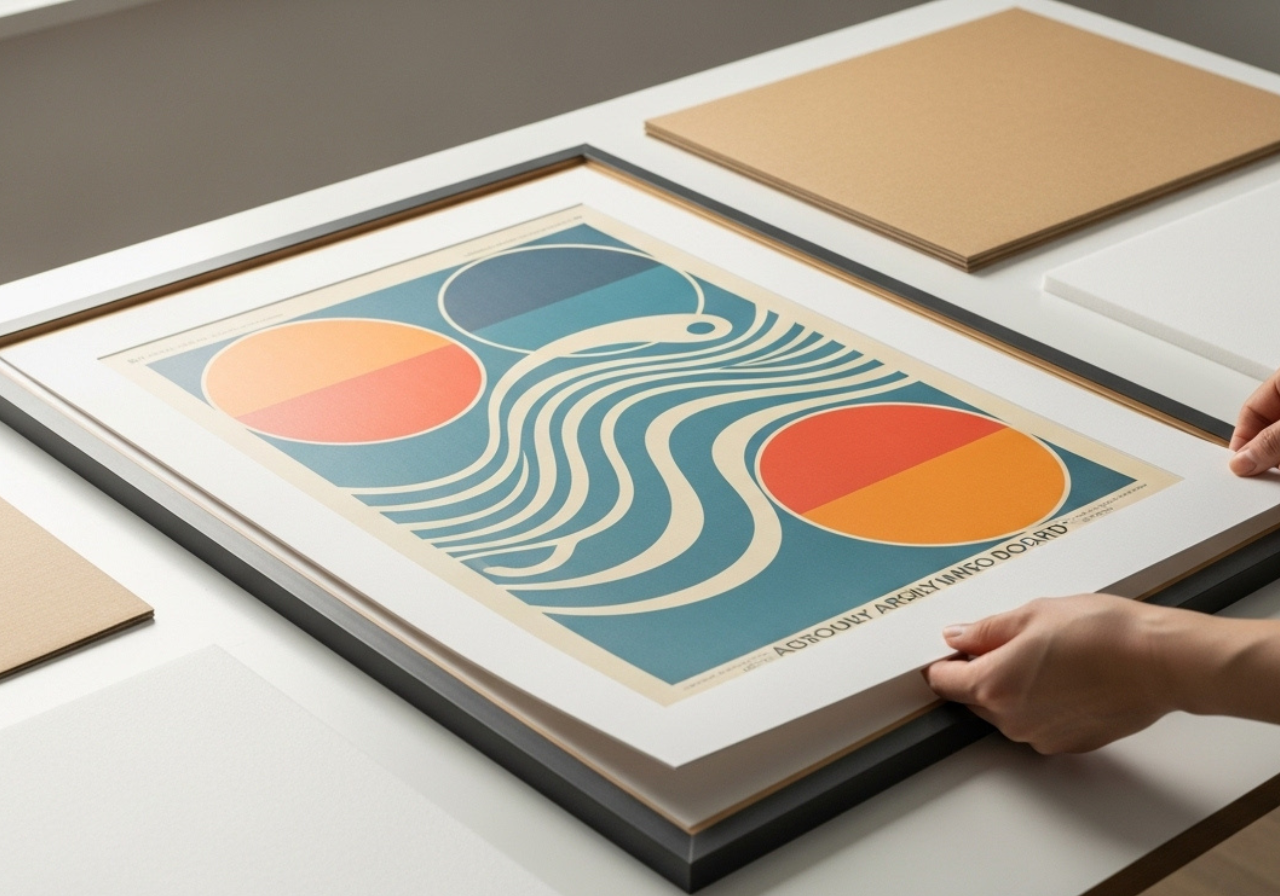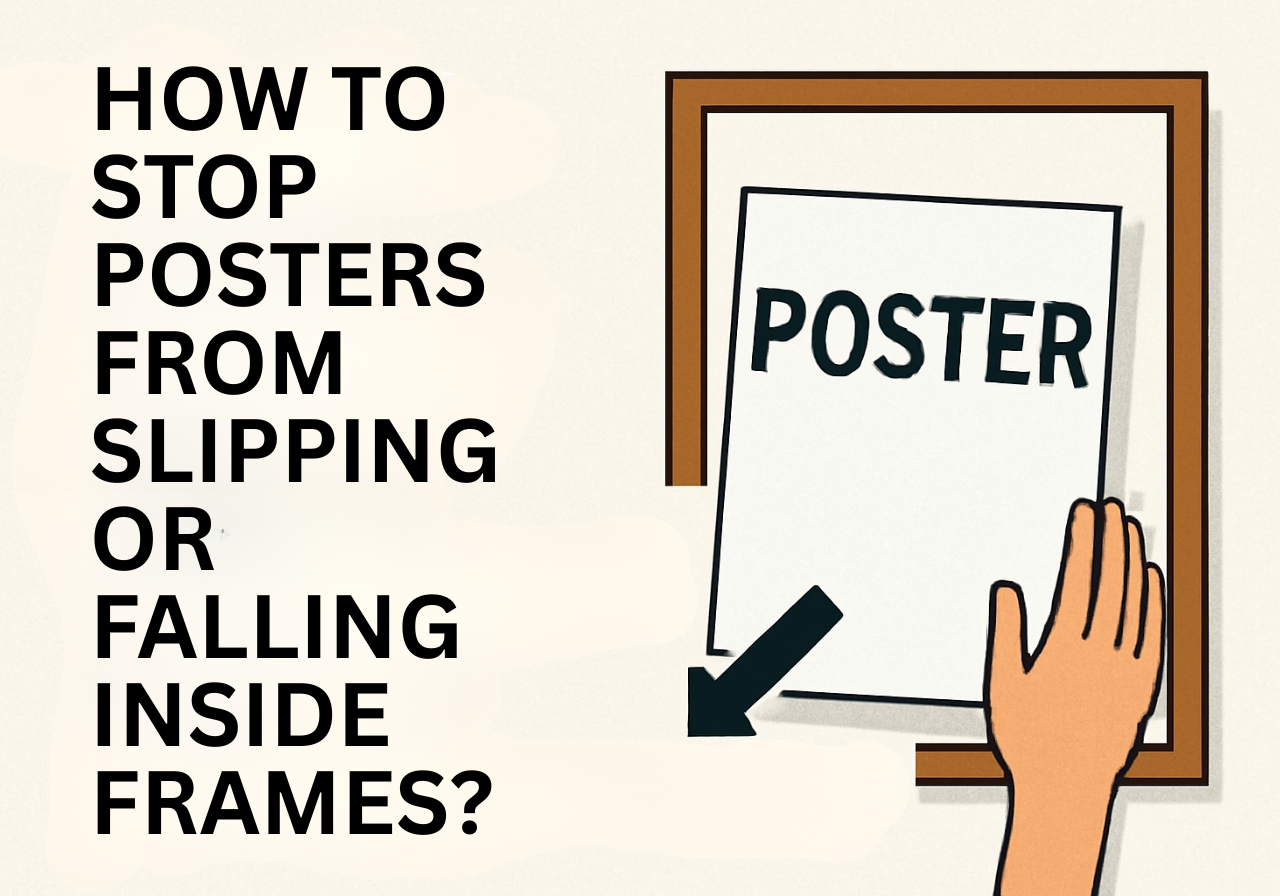Posters are more than just decoration. They hold memories, showcase art and often represent personal taste. However, many people notice that posters lose their brightness and vibrancy as time passes. Colours fade, paper weakens and images no longer look the same. This fading is not random; it happens for clear reasons. Understanding why posters fade allows you to take steps to protect them and keep them looking fresh for years.
Why Do Posters Fade?
Fading happens because of several combined factors. These include light exposure, material quality, environmental conditions and even how you handle the poster. Let’s break down each cause in detail.
1. Sunlight and UV Exposure
Sunlight is the number one reason posters lose their color. The ultraviolet (UV) rays in sunlight attack the pigments in the ink. Over time, they break down the chemical bonds that give the ink its rich tones. This process makes reds turn pink, blues become pale and blacks fade to grey. Posters that hang near windows or in rooms with a lot of natural light fade the fastest. Even artificial lighting, especially fluorescent bulbs, can cause slow but steady fading. If you display posters without UV protection, expect them to lose their vibrancy much sooner than you’d like.
2. Poor Print Quality
Not all posters are printed the same way. Many mass-produced posters use dye-based inks because they are cheaper and easier to print with. However, dye-based inks are less resistant to light and moisture. Pigment-based inks, by contrast, are much more durable and hold their color longer. The type of paper also plays a big role. Thin, low-quality paper often contains acid, which makes it turn yellow and brittle over time. High-quality, acid-free paper offers far better protection against fading and ageing. If you buy posters with poor print quality, they will start to look dull within a few years.
3. Environmental Factors
The environment around your poster has a big impact on how long it lasts. High humidity encourages mould and mildew, which stain and damage the paper. Excessive heat speeds up the breakdown of both paper fibres and ink pigments. Pollutants in the air, such as cigarette smoke, cooking fumes or dust, settle on the surface and cause gradual discoloration. Even if a poster avoids direct sunlight, a poor environment can still damage it over time. That is why posters in kitchens, bathrooms or smoky rooms fade and weaken much faster than those in clean, stable conditions.
4. Handling and Friction
Every time you touch a poster, you risk damaging it. The oils and dirt on your fingers transfer to the paper, leaving marks that may darken or stain over time. Rolling and unrolling posters too often creates creases, which weaken the print and make the colours look uneven. Using tape, pins or glue directly on a poster tears the paper fibres and leaves permanent marks. Even friction from moving the poster around a wall can scratch the ink. Poor handling is one of the most overlooked reasons posters lose their original sharpness.
How to Prevent Posters from Fading
You can prevent posters from fading by protecting them from light, choosing high-quality materials and maintaining the right environment. Here are the best ways to keep your posters looking new.
1. Limit Sunlight Exposure
Keep posters away from direct sunlight. Hang them on walls that do not face windows or place them in darker areas of the room. If your poster must be near natural light, use blinds or curtains during peak hours. When framing, choose glass or acrylic with UV protection, which blocks harmful rays from reaching the print. This small step greatly reduces fading and extends the life of the poster.
2. Use Archival Materials
Invest in posters printed with archival-quality materials. Look for pigment-based inks rather than dye-based ones and select acid-free paper that resists yellowing. If you are framing the poster, use acid-free mounts and backing boards to stop chemicals from leaching into the paper. Archival materials may cost more but they provide the best defence against fading and deterioration.
3. Frame with Protective Glass
Framing adds an extra layer of protection. UV-protective glass or acrylic glazing prevents light damage, while non-reflective options reduce glare. A proper frame also seals the poster against dust, moisture and air pollutants. Always use a frame that fits well, because loose frames allow air to circulate and cause warping. When done correctly, framing preserves both the colours and structure of the poster for many years.
4. Control Indoor Conditions
The environment where you place a poster makes a difference. Aim for a stable indoor temperature and moderate humidity. Avoid hanging posters in kitchens, bathrooms or any room that gets too hot or damp. If possible, keep posters in living rooms, bedrooms or offices where conditions remain steady. Good airflow and regular cleaning also help prevent damage from dust and pollutants.
5. Handle with Care
Always handle posters with clean hands or cotton gloves. Avoid folding or rolling them too tightly, because creases are nearly impossible to remove. Never use tape, glue or pins directly on the poster, as these leave lasting damage. If you want to display a poster without framing, use clips or hangers designed specifically for posters. Gentle handling ensures that the surface stays smooth and the colours remain intact.
Best Practices for Long-Term Preservation
Preserving posters takes ongoing care. If you own more than one, rotate them every few months so that no single poster stays exposed for too long. Store unused posters in archival tubes or flat storage boxes away from heat and moisture. Make sure not to roll posters too tightly, as this causes permanent creases. Clean framed posters regularly with a soft, dry cloth to remove dust without scratching the glass. By following these habits, you protect your collection and keep each piece in excellent condition.
Final Thoughts
Posters fade for many reasons, including sunlight, low-quality materials, environmental damage and poor handling. The good news is that fading is preventable. By choosing durable materials, framing with UV-protective glass, keeping posters away from sunlight, and handling them with care, you can extend their life by decades.
At MyProMemories, we focus on creating posters and frames designed for long-lasting beauty. Our high-quality prints use strong materials and protective options so you can enjoy your posters for years without worrying about fading.







